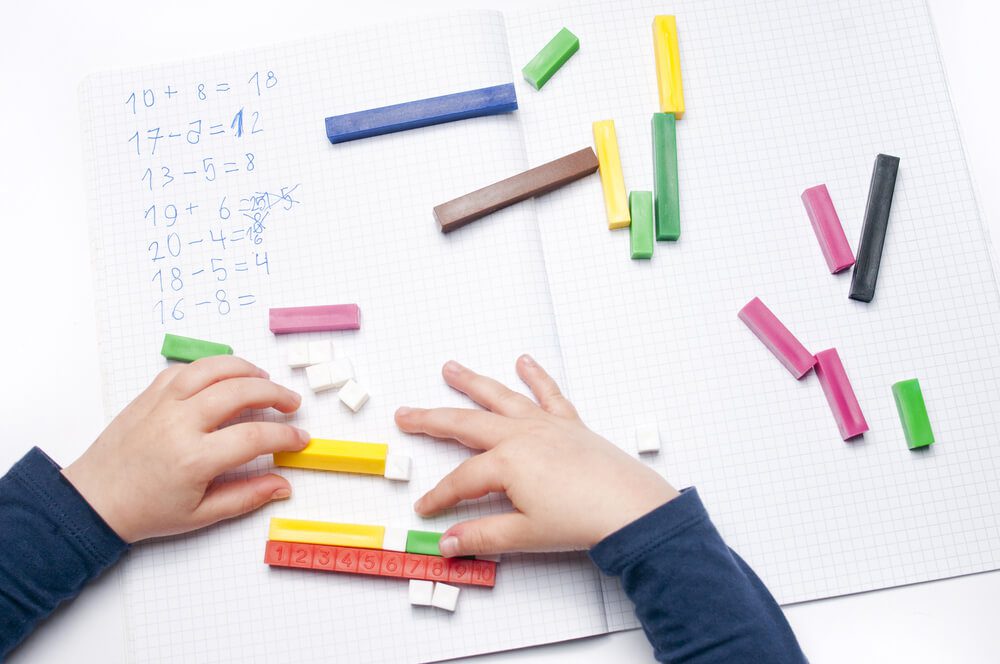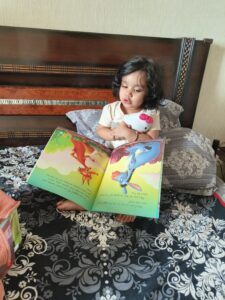“Children display a universal love of mathematics, which is par excellence the science of precision, order, and intelligence.” (Maria Montessori: Her Life and Work, p. 324)
Maria Montessori once said that a mathematical mind was “a sort of mind which is built up with exactness.” She got inspired by the French philosopher Pascal’s idea that the human has a mathematical mind.
The infant and young child observe and experience the sensorial world. Through this experience, the child extracts concepts and attributes of the objects present in the surroundings. These concepts enable children to establish mental order. The child forms a cognitive map that aids in adjusting to the environment and any potential alterations that might take place within it.
Dr. Montessori often used the term ‘Mathematical Mind,’ a reference to Blaise Pascal’s theory that “man’s mind was mathematical by nature and that knowledge and progress came from accurate observation” (The Absorbent Mind, 17, pg. 169).
She strongly held the belief that every child inherently possesses a natural inclination towards precision, orientation, and order. This inclination is often demonstrated in older children through their ability to think logically and systematically.
In her writings in The Absorbent Mind, she beautifully illustrates this genetic gift as the warp on a loom, wherein the child’s experiences and learning are intricately woven as they grow and grasp opportunities to shape, pair, match, sort, and apply the principles of one-to-one correspondence, order, sequence, and pattern-making.
The mathematical mind approximates quantities and recognizes identity, similarity, distinction, and patterns to establish order, sequence, and control errors.
What is the Mathematical Mind?
According to AMI’s (Association Montessori International) website, the glossary of Montessori terms describes the Mathematical Mind as, “All babies are born with mathematical minds, that is, they have a propensity to learn things which enhance their ability to be exact and orderly, to observe, compare, and classify. Humans naturally tend to calculate, measure, reason, abstract, imagine and create. But the vital part of intelligence must be given help and direction for it to develop and function. If mathematics is not part of the young child’s experience, his subconscious mind will not be accepting of it at a later date.”
A prevalent misconception is that children below the age of four or five lack the cognitive capacity to grasp early mathematical concepts. Unfortunately, the current educational standards in India were established using this misinformed way of thinking. In truth, the child’s “mathematical mind,” a fundamental cornerstone of human intelligence, should be nurtured and cultivated from the earliest stages possible.
Must Read: The Power of Montessori Materials in Developing Handwriting Skills
Dr. Montessori put it this way, “Great creations come from the mathematical mind, so we must always consider all that is mathematical as a means of mental development. It is certain that mathematics organizes the abstract path of the mind, so we must offer it at an early age, in a clear and very accessible manner, as a stimulus to the child whose mind is yet to be organized.”
“The hands are the instruments of man’s intelligence.” ~ Dr. Maria Montessori
Dr. Montessori also noted that young children acquire initial mathematical concepts by engaging in tactile activities like touching, stacking, sorting, and manipulating objects while counting them. Through this interaction with diverse materials, children develop the ability to identify quantities, sequences, and patterns. This is the groundwork for basic mathematical principles.
The Montessori classroom provides a prepared environment that carefully maintains the flow and order of materials on the shelves, ensuring an optimal introduction to the children. We begin with the simple moving to more complex ideas, concrete materials to the abstract. Why is this important? Maria Montessori stated, “What the hand does the mind remembers.”
As children engage with materials crafted to illustrate a concept, they can physically grasp, touch, and manipulate them. Only after a child has had the opportunity to work with these materials with their hands can they begin to understand the concepts abstractly.
Maria Montessori’s use of the term, ‘The Mathematical Mind,’ to encompass the distinct inclinations of the human intellect, including traits like order, precision, exploration, and orientation. Humans also have the unique abilities to imagine, create, and think abstractly. Montessori designed her math materials to incorporate the natural capabilities of a child’s mathematical mind and help enhance them.
Montessori Materials – A Game Changer in Education
Before we can address the math materials, one should introduce practical life and sensorial skills activities as they are important to build the mathematical mind. The curriculum is designed in such a way that it allows children to work with concepts such as size, measurement, and counting. At the same time, they also aid in the development of order and exactness. The pink tower, from the Sensorial area, is an excellent example of this. When a child works with this material, stack them from largest to smallest, it requires visual discrimination, coordination, and precision (direct aims). These opportunities in Practical Life and Sensorial lay a foundation for the work that will be beneficial later on in learning Math.
Also Check:Bead Bars | Montessori Mathematics Activity
The first materials a child is introduced to in math are the ones that are associated with numerals 1-10. Number rods, the spindle box, or the short bead stairs, a child can feel and see the difference between the numbers 1 and 10 or any number in between. The ten and teen boards are introductions to greater numbers, still allowing the children to touch and manipulate the beads associated with these materials.
Understanding the distinction between a single unit bead, a set of ten bars, a hundred square, and a thousand cubes establishes a solid foundation for comprehending the vast representations these numbers can hold.
Primary children learn the names of geometric solids as early as 3.5 years of age. They can easily identify not just cubes and spheres but square-based pyramids, rectangular prisms, ellipsoids, and more. As they move to 5 years, they learn about various concepts, including studies of angles, triangles, polygons, and so much more. A third-grader can easily identify a right-angled, isosceles triangle.
As with the other curriculum areas of a Montessori classroom, children can work with an array of materials after they have been given a presentation.
Conclusion
To truly nurture a child’s mathematical mindset and foster its growth, it is essential that we give equal attention and support to their endeavors in Practical Life and Sensorial activities, alongside their engagement with Math materials. Before introducing the concept of abstraction, we must provide them with ample opportunities and time to work with hands-on exploration materials that have been specifically designed for this purpose.
In our upcoming article, we delve into the fascinating world of Montessori’s mathematical materials, providing comprehensive insights. Discover why Montessori firmly believed that every child is born with a mathematical mind.
Keep reading and share your reviews.




